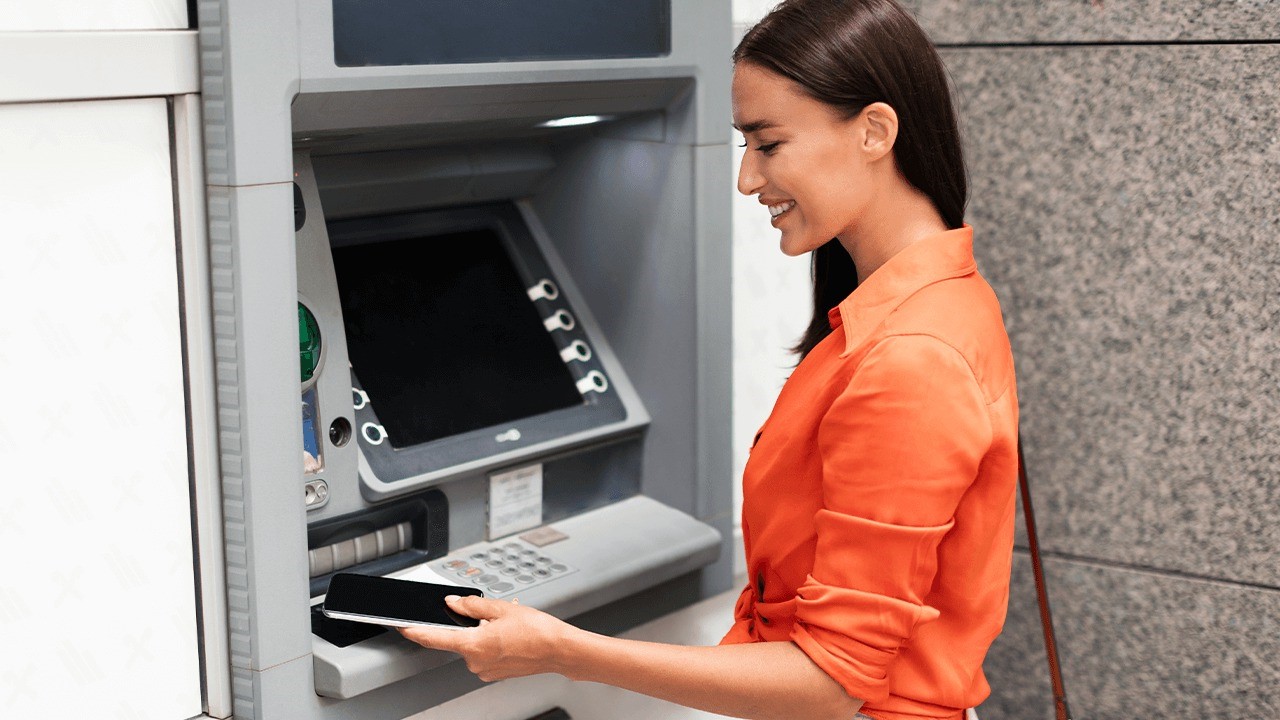Home>Business and Finance>How To Choose The Right Payment Method For Your Business


Business and Finance
How To Choose The Right Payment Method For Your Business
Published: February 24, 2024
Learn how to select the best payment method for your business with our comprehensive guide. Explore the latest trends and strategies in business and finance.
(Many of the links in this article redirect to a specific reviewed product. Your purchase of these products through affiliate links helps to generate commission for Noodls.com, at no extra cost. Learn more)
Table of Contents
Introduction
Choosing the right payment method is a crucial decision for any business. In today's fast-paced and ever-evolving digital landscape, the options for processing payments are vast and diverse. From traditional methods like cash and checks to modern electronic and mobile payment solutions, businesses have an array of choices at their disposal. The payment method a business selects can significantly impact its operations, customer satisfaction, and overall financial health.
In this article, we will delve into the intricacies of selecting the most suitable payment method for your business. We will explore the various payment options available, consider the factors that should influence your decision, and provide insights into popular payment methods that are widely used by businesses across different industries. Additionally, we will discuss the implementation of the chosen payment method, ensuring a seamless integration that aligns with your business objectives and customer preferences.
As the business landscape continues to embrace digital transformation, the significance of offering convenient and secure payment options cannot be overstated. Whether you operate a brick-and-mortar store, an e-commerce platform, or a service-based business, the payment method you choose can impact customer acquisition, retention, and satisfaction. By understanding the nuances of different payment methods and making an informed decision, you can streamline your financial processes, enhance customer experience, and position your business for sustained growth and success.
Understanding Different Payment Methods
In today's dynamic business landscape, understanding the diverse array of payment methods is essential for making informed decisions that align with your business objectives and customer preferences. From traditional forms of payment to cutting-edge digital solutions, each method carries its unique features, benefits, and considerations. Let's explore the various payment methods available to businesses:
1. Cash
Cash transactions have been a cornerstone of commerce for centuries. Accepting cash payments provides immediacy and liquidity, making it a preferred choice for many businesses, especially those with in-person transactions. However, managing and securing cash comes with its own set of challenges, including the need for robust cash-handling procedures and security measures.
2. Checks
Despite the rise of digital payments, checks remain a prevalent method for business-to-business transactions. They offer a tangible paper trail and can be useful for larger transactions. However, processing checks can be time-consuming, and there is always a risk of bounced or fraudulent checks.
3. Credit and Debit Cards
Credit and debit card payments have become ubiquitous in the modern business landscape. They offer convenience for customers and businesses alike, with swift transactions and built-in security features. However, businesses must consider the associated processing fees and compliance with payment card industry (PCI) standards.
Read more: How To Cancel A Zelle Payment
4. Mobile Payments
With the proliferation of smartphones, mobile payment solutions have gained traction. From mobile wallets to contactless payments, these methods offer unparalleled convenience and speed. Implementing mobile payment options can cater to tech-savvy customers and enhance the overall shopping experience.
5. Online Payment Gateways
For e-commerce businesses, online payment gateways are indispensable. These platforms facilitate secure online transactions, allowing customers to make purchases from anywhere with an internet connection. Integration with popular e-commerce platforms and robust security measures are crucial considerations when adopting online payment gateways.
6. Digital Wallets
Digital wallets, such as PayPal, Apple Pay, and Google Pay, have revolutionized how consumers manage their funds and make purchases. These platforms store payment information securely and streamline the checkout process, offering a seamless and efficient payment experience for customers.
Understanding the nuances of each payment method is vital for businesses seeking to cater to diverse customer preferences and streamline their financial operations. By evaluating the features, costs, and security aspects of different payment methods, businesses can make informed decisions that align with their operational needs and customer expectations.
Factors to Consider When Choosing a Payment Method
When evaluating the most suitable payment method for your business, several critical factors should guide your decision-making process. Understanding and carefully considering these factors can help you align your payment strategy with your business model, customer base, and operational requirements. Here are the key considerations to keep in mind:
-
Customer Preferences: Understanding your customers' preferred payment methods is paramount. Different demographics may have varying preferences, and catering to these preferences can enhance the overall customer experience and satisfaction. Conducting surveys or analyzing past transaction data can provide valuable insights into the payment methods favored by your customer base.
-
Security and Fraud Prevention: Prioritizing the security of payment transactions is non-negotiable. Selecting payment methods with robust security features and compliance with industry standards can safeguard your business and customers against potential fraud and data breaches. Look for payment solutions that offer encryption, tokenization, and multi-factor authentication to bolster security.
-
Costs and Fees: Each payment method comes with associated costs and fees. Understanding the fee structure, including transaction fees, interchange fees, and processing fees, is crucial for evaluating the financial impact on your business. Consider the overall cost of accepting payments through different methods and weigh it against the value they bring in terms of customer convenience and operational efficiency.
-
Integration and Compatibility: If your business operates across multiple channels, such as in-store, online, and mobile, ensuring seamless integration of the chosen payment method is essential. Compatibility with your existing point-of-sale systems, e-commerce platforms, and mobile applications is vital for a cohesive and efficient payment ecosystem.
-
Speed and Accessibility: The speed of transaction processing and accessibility for customers are pivotal factors. Modern consumers expect swift and hassle-free payment experiences. Choosing payment methods that offer quick transaction processing and accessibility across various devices can contribute to customer satisfaction and loyalty.
-
Regulatory Compliance: Staying abreast of regulatory requirements and compliance standards is imperative when selecting a payment method. Different payment methods may have specific regulatory considerations, such as PCI DSS compliance for card payments. Ensuring adherence to these regulations is essential for mitigating risks and maintaining legal compliance.
-
Scalability and Growth: As your business expands, scalability becomes a crucial consideration. The chosen payment method should accommodate your business's growth trajectory, supporting increased transaction volumes and evolving customer needs without significant operational disruptions.
By carefully evaluating these factors and their relevance to your business, you can make an informed decision when choosing the right payment method. Balancing customer preferences, security, costs, and operational considerations will enable you to implement a payment strategy that aligns with your business goals and enhances the overall customer experience.
Popular Payment Methods for Businesses
In the modern business landscape, several payment methods have gained widespread popularity due to their convenience, security, and seamless integration with diverse business models. Understanding these popular payment methods can provide valuable insights for businesses seeking to optimize their financial processes and cater to customer preferences. Let's explore some of the widely embraced payment methods:
1. Credit and Debit Cards
Credit and debit card payments have become a cornerstone of modern commerce. The ubiquitous nature of card transactions makes them a preferred choice for businesses across various industries. With the advent of chip-enabled cards and contactless payment technology, transactions have become more secure and expedient. Businesses that accept card payments can cater to a broad customer base and offer a streamlined checkout experience, enhancing customer satisfaction and driving sales.
2. Mobile Payments
The proliferation of smartphones has propelled the adoption of mobile payment solutions. From mobile wallets to contactless payment options, businesses are leveraging the convenience and speed offered by mobile payments. By integrating mobile payment capabilities, businesses can tap into the growing segment of tech-savvy consumers who seek frictionless payment experiences. Additionally, mobile payments are well-suited for businesses with a strong online and mobile presence, enabling seamless transactions across digital channels.
3. Online Payment Gateways
For e-commerce businesses, online payment gateways are indispensable. These platforms facilitate secure online transactions, allowing customers to make purchases from anywhere with an internet connection. Integration with popular e-commerce platforms and robust security measures are crucial considerations when adopting online payment gateways. By offering a diverse range of online payment options, businesses can expand their reach and capitalize on the global e-commerce market.
4. Digital Wallets
Digital wallets, such as PayPal, Apple Pay, and Google Pay, have revolutionized how consumers manage their funds and make purchases. These platforms store payment information securely and streamline the checkout process, offering a seamless and efficient payment experience for customers. Businesses that embrace digital wallets can cater to tech-savvy consumers who prioritize convenience and security in their payment interactions.
5. Contactless Payments
The advent of contactless payment technology has transformed the way businesses process transactions. Contactless payments, facilitated through near field communication (NFC) technology, offer unparalleled speed and convenience for both businesses and customers. With the global emphasis on hygiene and touch-free interactions, contactless payments have witnessed accelerated adoption, making them a popular choice for businesses looking to enhance the safety and efficiency of payment transactions.
By understanding the popularity and benefits of these payment methods, businesses can make informed decisions when selecting the most suitable payment solutions for their operations. Each method offers unique advantages and considerations, and aligning them with your business objectives and customer preferences can drive enhanced financial efficiency and customer satisfaction.
How to Implement the Chosen Payment Method
Implementing the chosen payment method is a pivotal step that requires careful planning, seamless integration, and effective communication with both internal stakeholders and customers. The successful implementation of a payment method aligns with your business objectives and customer preferences, ensuring a streamlined and secure payment experience. Here's a comprehensive guide on how to implement the chosen payment method:
-
Internal Alignment and Training: Begin by ensuring that your internal teams are well-versed in the chosen payment method. Provide comprehensive training to your staff, including frontline employees and customer support representatives, to familiarize them with the new payment process. Clear communication of the benefits and operational aspects of the chosen method is essential to ensure a cohesive implementation across all touchpoints.
-
Integration with Existing Systems: If your business operates across multiple channels, such as in-store, online, and mobile, seamless integration of the chosen payment method with your existing systems is paramount. Work closely with your IT and technical teams to ensure that the payment method integrates seamlessly with your point-of-sale (POS) systems, e-commerce platforms, and mobile applications. Conduct thorough testing to identify and resolve any potential integration issues before the official rollout.
-
Customer Education and Communication: Transparent communication with your customers is crucial when introducing a new payment method. Provide clear and accessible information about the benefits and usage of the chosen method through various channels, including your website, social media platforms, and in-store signage. Educate your customers on how to use the new payment method and address any frequently asked questions to alleviate potential concerns.
-
Security and Compliance Measures: Prioritize the security and compliance aspects of the chosen payment method during implementation. Ensure that your systems are equipped to handle secure transactions and adhere to industry standards for data protection. Communicate the robust security measures in place to instill confidence in your customers regarding the safety of their payment information.
-
Testing and Feedback Loop: Before fully implementing the chosen payment method, conduct extensive testing to validate its functionality and reliability. Encourage feedback from both internal stakeholders and early adopter customers to identify any operational or user experience issues. Utilize this feedback to fine-tune the implementation process and address any areas of improvement.
-
Monitoring and Optimization: Once the payment method is live, continuously monitor its performance and gather insights into customer adoption and usage patterns. Leverage analytics and reporting tools to track transaction volumes, success rates, and customer feedback. Use these insights to optimize the payment process, address any emerging issues, and enhance the overall customer experience.
By following these steps, businesses can effectively implement the chosen payment method, ensuring a seamless transition and a positive impact on customer satisfaction and operational efficiency. A well-executed implementation process sets the foundation for long-term success and fosters a positive perception of your business among customers.
Conclusion
In conclusion, the process of choosing the right payment method for your business is a multifaceted endeavor that requires careful consideration of various factors, including customer preferences, security, costs, and operational requirements. By understanding the diverse array of payment methods available, businesses can align their payment strategies with the evolving needs of their customer base and the dynamic nature of the market.
The landscape of payment methods continues to evolve, driven by technological advancements and shifting consumer behaviors. From traditional cash transactions to cutting-edge mobile and digital payment solutions, businesses are presented with a myriad of options to facilitate seamless and secure financial transactions. Embracing this diversity empowers businesses to cater to a broad spectrum of customer preferences and adapt to the rapidly changing dynamics of commerce.
As businesses navigate the complexities of selecting the most suitable payment method, it is imperative to prioritize security, compliance, and customer experience. The seamless integration of the chosen payment method across various touchpoints, including in-store, online, and mobile channels, is essential for delivering a cohesive and convenient payment experience to customers.
Furthermore, the implementation of the chosen payment method demands meticulous planning, internal alignment, and transparent communication with customers. By fostering a culture of continuous improvement and customer-centricity, businesses can optimize their payment processes and drive sustained growth and customer loyalty.
In today's digital era, where convenience and security are paramount for consumers, the chosen payment method plays a pivotal role in shaping the overall customer experience and influencing purchasing decisions. By staying attuned to emerging trends and technological innovations in the payment landscape, businesses can position themselves at the forefront of financial innovation and meet the evolving needs of their customers.
Ultimately, the right payment method is not merely a transactional tool but a strategic enabler that fosters trust, convenience, and efficiency in the interactions between businesses and their customers. By embracing a customer-centric approach and leveraging the diverse array of payment methods available, businesses can forge stronger connections with their customer base and drive sustainable success in the ever-evolving marketplace.












